Foil basics: Important terms, foil types and the right equipment for foil windsurfing
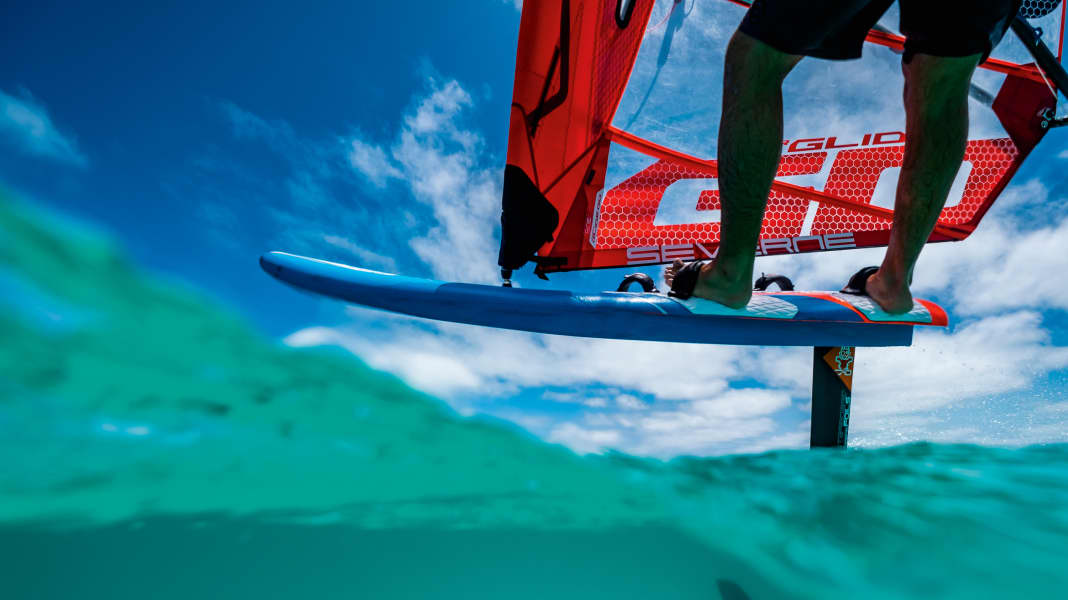
In this article:
Other parts of the Foil series:
When the first foils for windsurfing came onto the market a few years ago, the scene was divided. There was everything from great enthusiasm to passionate rejection. Some readers would have liked to have seen more foiling-related topics in surf magazine, while others expressed the wish that "foiling should have its own magazine because it has nothing to do with windsurfing". A few years later, the dust has settled and windfoiling, like freestyle, slalom or freeride, has established itself as its own discipline within the sport of windsurfing.
The fact that this is the case has a lot to do with the advantages of windfoiling: The unique, silent flying experience fascinates many. Because the friction of the board on the water is eliminated, you can ride smaller sails with the same wind as with a fin, or have fun earlier with the same size sail. It's no wonder that countless brands have jumped on the new trend within a short space of time and launched a variety of foils, boards and even special sails onto the market. This variety is always a source of uncertainty, especially for newcomers to windfoiling.
Basic terms relating to foil

- Mast: Made of carbon or aluminium; sits on the board in the deep tuttle box or a double rail and is screwed to the bottom of the fuselage.
- Front wing: The centrepiece of every foil; generates the entire lift. The shape, profile and span have a fundamental influence on the handling characteristics.
- Rear wing/stabiliser: Produces downforce and prevents the board from tipping forwards around the tilt axis with the nose.
- Fuselage: Side member on which the sashes are mounted
- low aspect ratio: Foils with a small wingspan and rather narrow wings with thick airfoils - take off easily and are good-natured, but are not as fast
- high aspect ratio: Foils, where the wings have a large span but are narrower and thinner profiled - become very fast, but are more difficult to get flying and react more sensitively to control impulses
The right foil material for all types
There are different types of foils and boards on the market. Which one you should choose depends primarily on your riding ability, but above all on your preferences. We have designed three types for foil surfing below - simply assign yourself to one of them and choose the appropriate material.
Type 1: Foilstyler
If you have little experience on a small funboard but still want to get into foilsurfing. Do you mainly surf with wave or freestyle sails under 6 square metres and on suitable boards in the wave, freestyle or freemove categories? Your focus is on manoeuvres, jumps or even loops and freestyle tricks, but speed duels and extreme angles on the cross leave you pretty cold? Do you mainly want to foil when the wind is not yet strong enough for waving or tricks, but still want to use your small sails? Then you belong in this category!
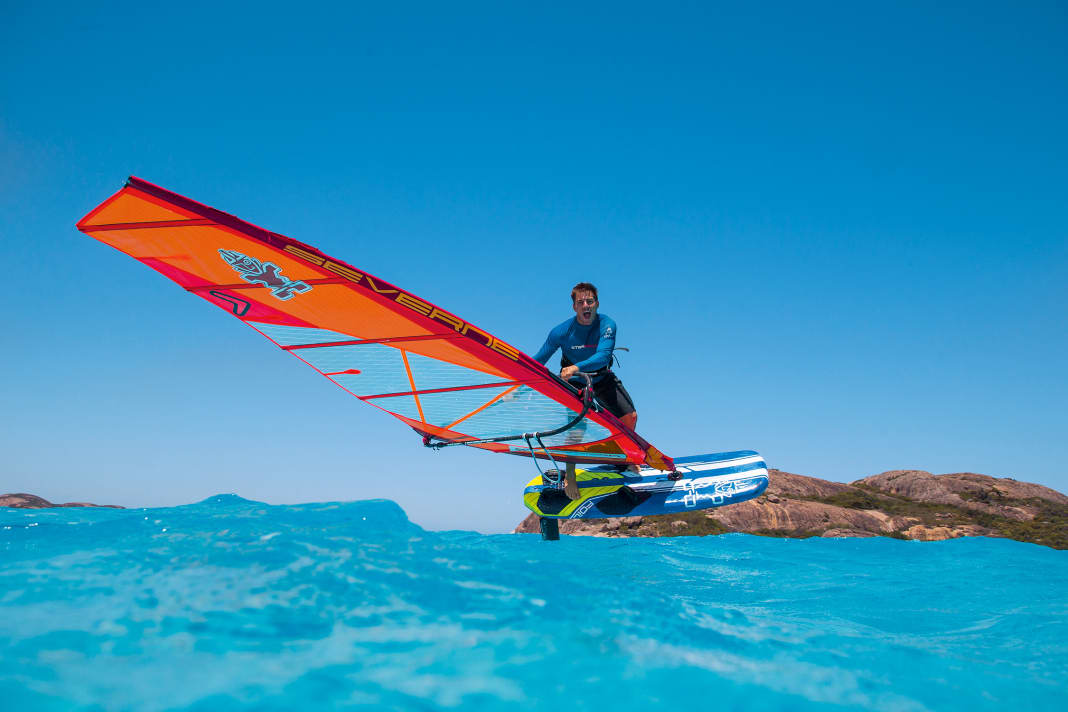



Board Tip: Compact foil boards with a short length (< 2.10 metres) that offer the option of moving the foot straps further inwards towards the centre of the board. Alternatively, windsurf boards in the freestyle or freestyle wave categories can also be an alternative, provided they are equipped with a fin box that is "foil ready".
Foil tip: Foils with a moderate wingspan, wider wings and a slightly thicker profiled front wing ("low aspect ratio") ensure early take-off even with small sails. Even at low speeds, such foils remain in the air for a long time during manoeuvres - ideal for practising jibes, duck jibes and carving 360s. Moderate mast lengths of 80 to 95 centimetres are ideal, and the mast can be made of either aluminium or carbon. Heavy riders (>85 kilos) who also want to jump a lot can tend towards a carbon mast in the medium term, as this cannot bend. In line with the manoeuvre-oriented orientation of such foils, the fuselages are significantly shorter than those of freeride or race foils, for example.
Sailing tip: Such board-foil combinations are perfectly complemented by softly trimmed wave, freestyle or small freemoving sails - the main thing is to have no camber. The ideal sail size is 4.2 to 6.5 square metres, which allows you to reach ten to twelve knots on the foil, depending on your weight and riding technique.
Type 2: Foilsurfing for freeriders & intermediates
Do you mainly surf with camberless freeride sails or 2-cam freerace sails? Do you use sporty boards for easy planing, speed riding and enjoyable jibes? Are you just as much a fan of extremely race-orientated material, such as slalom boards with edge-laid strap positions in combination with pure racing sails, as you are of freestyle tricks and wild jumps? In short, do you primarily want to take off early, whizz across the lake and perform sleek jibes? Then you are definitely a "freerider" type. The same applies if you can loop surf, but have had very little experience on small fun boards.
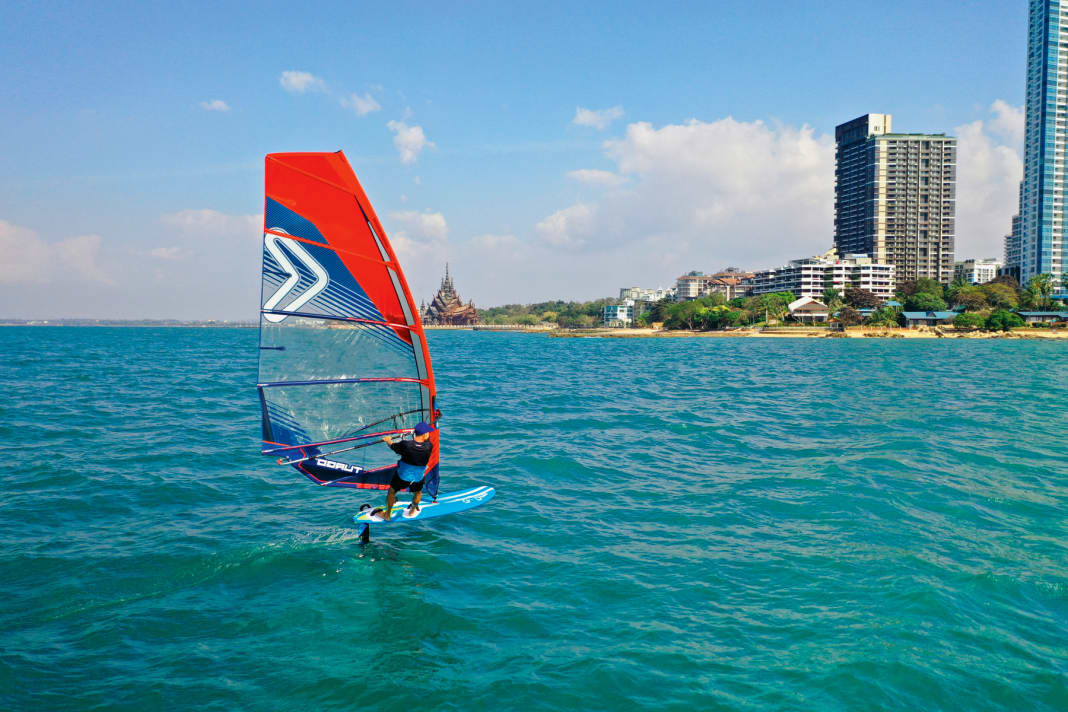




Board Tip: Wide freeride or freerace boards that are equipped with a "foil ready" fin box can be a cheap and uncomplicated way for you to get into windfoiling - simply swap the fin for a foil and off you go. Special foil freeride boards offer a little more stability in the air due to their more compact length and wider tail areas, especially when practising jibes.
Foil tip: You should also tend towards the golden mean when it comes to foils - freeride! Typical freeride foils lie between those for foil style and freerace in terms of wingspan, wing width and profile thickness. They therefore offer uncomplicated take-off even without a lot of pumping, a stable flying position and sufficient safety for jibes or 360s.
Sailing tip: Such board-foil combinations are perfectly complemented by softly trimmed freemove or wave sails, as well as camberless freeride sails and even 2-cam freerace sails.
Type 3: Freeracer
Do you like surfing with large camber sails over 7 square metres in combination with wide slalom or freerace boards? Accordingly, you have no problem with far-out loop positions when foilsurfing and the fact that water starts with large camber sails can be tedious can't stop you? For you, speed duels against your mates and the best possible angles on upwind and downwind courses are the fulfilment of your existence? Apart from jibes, are you relatively indifferent to manoeuvres on the foil such as duck jibes, carving 360s or even jumps? If you find yourself here, you are clearly the "freeracer" type. Your board-foil combination should have the following characteristics:
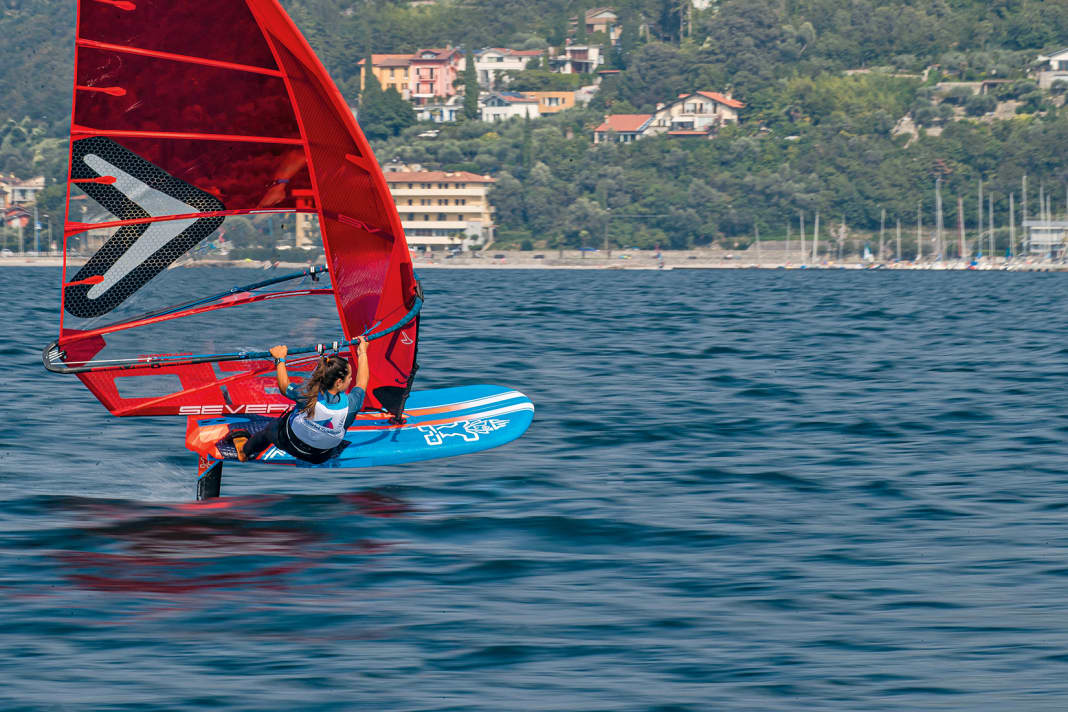



Board Tip: Boards with straps mounted far out are best suited to sporty racing - special foil boards are ideal, as their wide tails and compact dimensions allow for maximum controlled flights. However, formula or slalom boards with a width of at least 80 centimetres can also be a good alternative for beginners, provided they are equipped with a reinforced fin box ("foil ready").
Foil tip: If you are also looking for speed on a foil, you should always choose a foil with a "high aspect ratio" - these are wings that combine a large span with a narrow wing width and thin profiles. The fuselages of such performance-orientated foils are longer, which allows extreme angles upwind and downwind. Long carbon masts (90-105 centimetres) allow the boards to edge strongly without losing the necessary ground clearance, but also drive up the price. Race-orientated foils are not necessarily more difficult to ride than freeride foils, as they are extremely stable around all axes. However, they do require that you don't have any problems riding a board with far-out straps and large camber sails in order to fully utilise the performance potential of the foils.
Sailing tip: Board-foil combos for freeracers only make sense if you motorise them accordingly - large camber sails between six and nine square metres are ideal. Experienced foil racers swear by special foil race sails, which offer maximum power even in light winds with a very forward pressure point and tight leech - however, these are only of limited use or even unsuitable for windsurfing.
We also take a look at the differences in foilsurfing equipment in the following video - click here!
Interview with Tiesda You, the mastermind and designer of Starboard
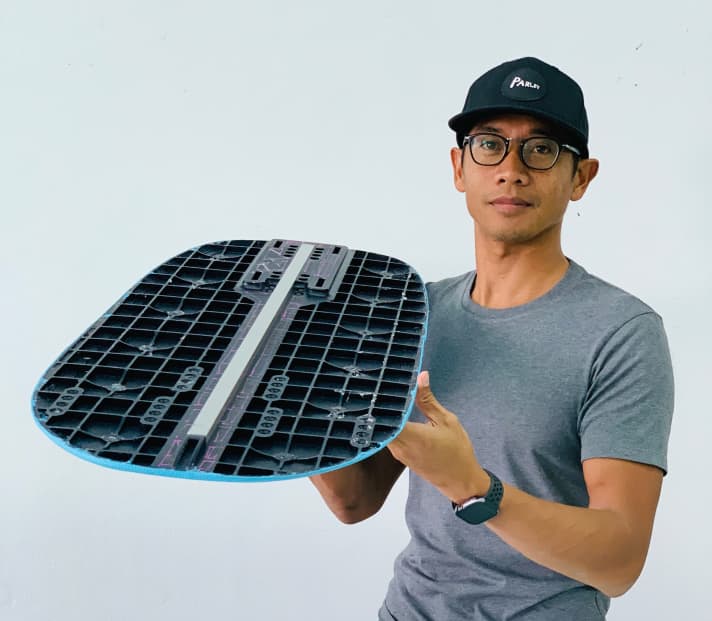
Tiesda, what are the different types of foil in general?
Roughly speaking, windsurfing foils on the market can be divided into three classes, which differ mainly in terms of their geometry: Firstly, race-orientated foils for sporty foiling, with a focus on maximum speed and extreme angles on space and upwind courses. Secondly, foils for cruising, tricks and jumping - these are often marketed under the term "foil style". And thirdly, foils that are somehow in between, for easy take-off, sporty freeriding and manoeuvres - these are generally regarded as freeride foils.
How do these foil types differ in terms of their geometry?
The race-orientated foils have very long masts, narrow front wings and large wingspans, so they are very elongated in terms of their wing shape. In product catalogues or on manufacturers' websites, you will often read about foils with a "high aspect ratio". In simple terms, the term "aspect ratio" refers to nothing other than the ratio of wingspan to surface area. Wings with a large span and less surface area therefore have a "high aspect ratio". Conversely, wings with a large area in relation to the wingspan have a "low aspect ratio" - these are wider wings with a smaller wingspan and thicker airfoils, which are usually designed for comfortable cruising, manoeuvres and early take-off, and less for top speed.
Which types of foil do you think we should start with?
One of the biggest mistakes is to believe that, for example, the cosy, thick foils in the "foil style" or "freeride foils" category are easier to ride than race-oriented foils. So it's not the case that you start with one type of foil and then work your way up until you can ride a race foil at some point. Windsurfers who also want to ride large camber sails and love to speed around on wide slalom or freerace boards with loops mounted far out should start on a race-orientated foil. Conversely, there are windsurfers who are otherwise more active in waves or freestyle and only want to ride sails up to 5.7 or 6.0 square metres with a focus on manoeuvres or jumps. They should definitely opt for a foil in the "Foilstyle" category.

